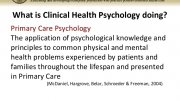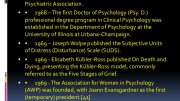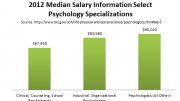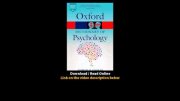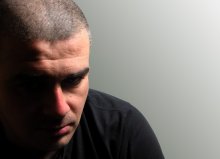
Robert A. Moss
Bon Secours St. Francis Hospital
Moss, R. A. (2013). A clinical biopsychological theory of loss-related depression. International Journal of Neuropsychotherapy, 1(2), 56-65. doi: 10.12744/ijnpt.2013.0056-0065
Abstract
Opponent-process theory has been discussed in relation to a number of behaviors, including addiction. More recently, it has been suggested that this theory plays a primary role in explaining loss-related depression symptoms. The current paper discusses the foundation for this view from a clinical biopsychological perspective. It discusses both treatment implications and theoretical issues, concluding with a call for further investigation into the clinical biopsychological approach.
Keywords: depression, loss, opponent-process theory, clinical biopsychology, columnar model, dimensional systems model
Correspondence concerning this article should be addressed to Robert A. Moss, Bon Secours St. Francis Hospital, 1 St. Francis Drive, Greenville, SC 29601. E-mail: [email protected]
A Clinical Biopsychological Theory of Loss-Related Depression
The past 20 years has witnessed an explosion in brain research. This has largely been the result of new and improved technology in brain imaging. Despite these advances, the lack of a clear understanding of the neural code by which cortical processing occurs and memory is stored has led to ongoing debates as to how best to understand cortical functioning. A recent series of articles in Psychological Review discussing localist versus distributed processing views demonstrates the lack of agreement on how memories are stored (Bowers, 2009, 2010; Plaut & McClelland, 2010; Quian Quiroga & Kreiman, 2010).In a 2006 article, Moss proposed the dimensional systems model (DSM) of cortical operations based on the cortical column (i.e., macrocolumn) as the binary unit involved in processing and memory storage. The model was subsequently updated and expanded to show how a columnar model can explain synchronicity and the role that the hippocampus plays in the formation of cortical memories (Moss, Hunter, Shah, & Havens, 2012). Based on this model, a clinical biopsychological model (CBM) has been proposed (Moss, 2001, 2007, 2010, 2013) for the understanding of psychological problems. Although loss and an inability to activate previously stored positive emotional memories represent one of the three areas highlighted in the theory, there has to date been no elaboration on how the model specifically applies to issues of loss and depression. The current paper is directed toward this goal.
Clinical Biopsychological Theory
The two cortices are considered to be semi-independent functioning minds. Within the suggested parallel processing design, whichever side can best respond to an ongoing situation is the side that assumes control of the ensuing response. Both hemispheres receive similar sensory input. The posterior lobes (i.e., the parietal, temporal, and occipital) are involved in processing and memory storage linked to incoming sensory information, while the frontal lobes are involved in analysis, planning, and response initiation as well as the memories associated with such activities. The left cortex processes sensory information in a detailed manner, with the result that it is slower than the right. The right cortex processes the information much faster, but in a global, less detailed manner. There is exchange of information between the sides, although this exchange can be both excitatory and inhibitory. From a developmental perspective, there is initially only very limited information exchange between lobes within each side, and between the hemispheres. This allows each cortical area to fully develop its memories and associated processing prior to influence from more distal areas. Additionally, left hemisphere functions (e.g., receptive and expressive speech) will develop more slowly than those of the right hemisphere (e.g., non-verbal emotional analyses and responses), since there are a greater number of cortical columns and interconnections associated with left hemisphere processing. A final point is that the right hemisphere’s global processing allows for faster responses if confronted with outside danger, which suggests that this side is biologically programmed to respond and assume behavioral control in a negative emotional state.
Source: www.neuropsychotherapist.com
|
Chaos in Brain Function: Containing Original Chapters by E. Basar and T. H. Bullock and Topical Articles Reprinted from the Springer Series in Brain Dynamics Book (Springer) |
You might also like:


